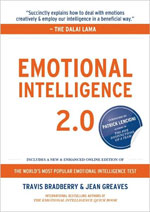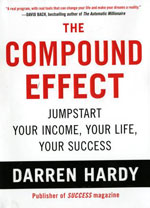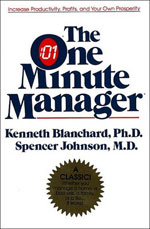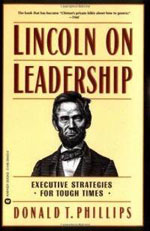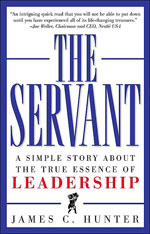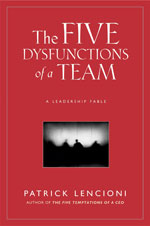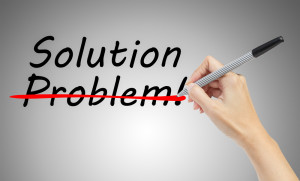 Turn on the TV, open the newspaper, or surf the Internet—what is the one thing you always see? Problems. Everywhere we look these days, we see issues and challenges. Problems are everywhere in our personal lives and at work too. For example, new products, sales, marketing, personnel…the list of problems we face each day is vast. These problems are not just at work and in our personal lives; we also face global and societal problems in our world today. Problems seem endless with no solutions in sight. Are we facing a “problem epidemic”?
Turn on the TV, open the newspaper, or surf the Internet—what is the one thing you always see? Problems. Everywhere we look these days, we see issues and challenges. Problems are everywhere in our personal lives and at work too. For example, new products, sales, marketing, personnel…the list of problems we face each day is vast. These problems are not just at work and in our personal lives; we also face global and societal problems in our world today. Problems seem endless with no solutions in sight. Are we facing a “problem epidemic”?
Now, enough of the “doom and gloom” mentality! What can we do about this “problem epidemic” we face every day? Accept and embrace our problems!
What if I told you your problems were, in fact, not problems at all?
Could you believe that your problems are actually opportunities?
Could you believe that they are merely unseen solutions waiting to be discovered?
What if we woke up every morning and faced our days with a “solution epidemic” mindset? Believe me—we can have this attitude; read on to see how.
In his book entitled Pink Bat, Michael McMillan makes a powerful statement about facing problems: “We’ve all heard the expression: ‘One man’s junk is another man’s treasure.’ Consider this: One man’s PROBLEM is another man’s SOLUTION.” Think about the last time you faced a problem, one where the solution was right in front of you—but you couldn’t see it.
So how do we learn to see those solutions that are right in front of us?
Before we answer this question, let’s explore the concept of “perceptual blindness.” Before reading further, watch the short video clip below as an exercise and explicitly follow the instructions given.
How could some people not see the gorilla, the changing curtain color, or the person leaving the game? It’s because they weren’t looking for these things and were focused on something else. This is why experts can be more prone to “perceptual blindness” than beginners. NASA conducted an experiment in a flight simulator in which commercial pilots were tested to see if they would notice distractions on a runway during simulated landings. Those who were trained pilots did not notice and landed directly on top of the distraction 1/4 of the time, while untrained pilots didn’t know what to expect during a typical landing and thus saw the distraction. The experienced pilots succumbed to “perceptual blindness.”
Have you ever noticed that outsiders often come up with solutions that insiders might miss? This is because beginners and outsiders are often open to possibilities and do not make assumptions. In other words, the beginners or outsiders are often better at unearthing solutions that the experts have stopped seeing. Looking back, often the solutions seem so obvious. Here is the reason we don’t notice the gorilla: our minds are built to focus our limited attention resources on exactly what we are trying to do and see.
I am always amazed at how new sales reps are often able to outperform the more seasoned reps with the launch of a new product or a challenging new corporate objective. Why do we see these phenomena in sales? I believe this pattern occurs as a result of our individual mindsets regarding problems. As an outsider, a new hire can see the solutions much more easily. They view the challenges of selling a new product in this light: “This is the best product available—why wouldn’t I be able to sell it? There has to be a way!”
Don’t get me wrong; sometimes the solution may not be simple, and it may not be just “right in front of you.” But perhaps the problem needs a fresh look. When faced with a problem, step away from where you are and then come back and take a fresh look at the challenge before you. Look for what you expect not to be there because, more often than not, that’s where it is. Focused attention allows us to filter distractions and work effectively.
Turning problems into solutions requires that we adjust our perceptions and remain open-minded to all possibilities. What you believe and focus on will become your reality. As Henry Ford says, “Whether you think you can, or you think you can’t—you’re right.”
Each time you are presented with a problem, remind yourself of this: for every problem, there is a solution and an opportunity. Each day, we have a choice. We can choose to see a world filled with problems or a world filled with unseen solutions. I choose the latter and hope you do the same.









